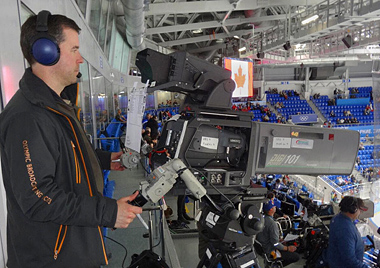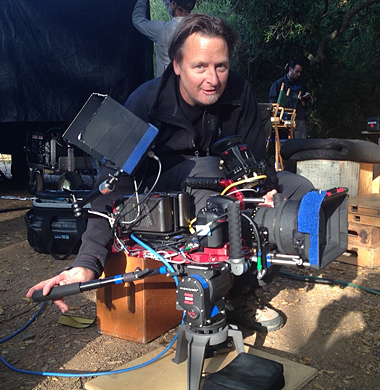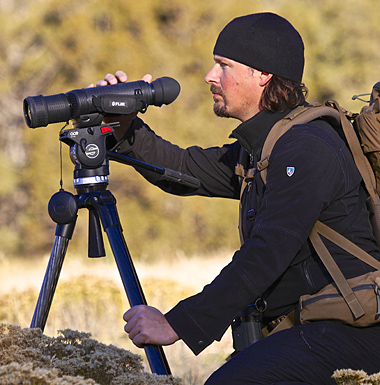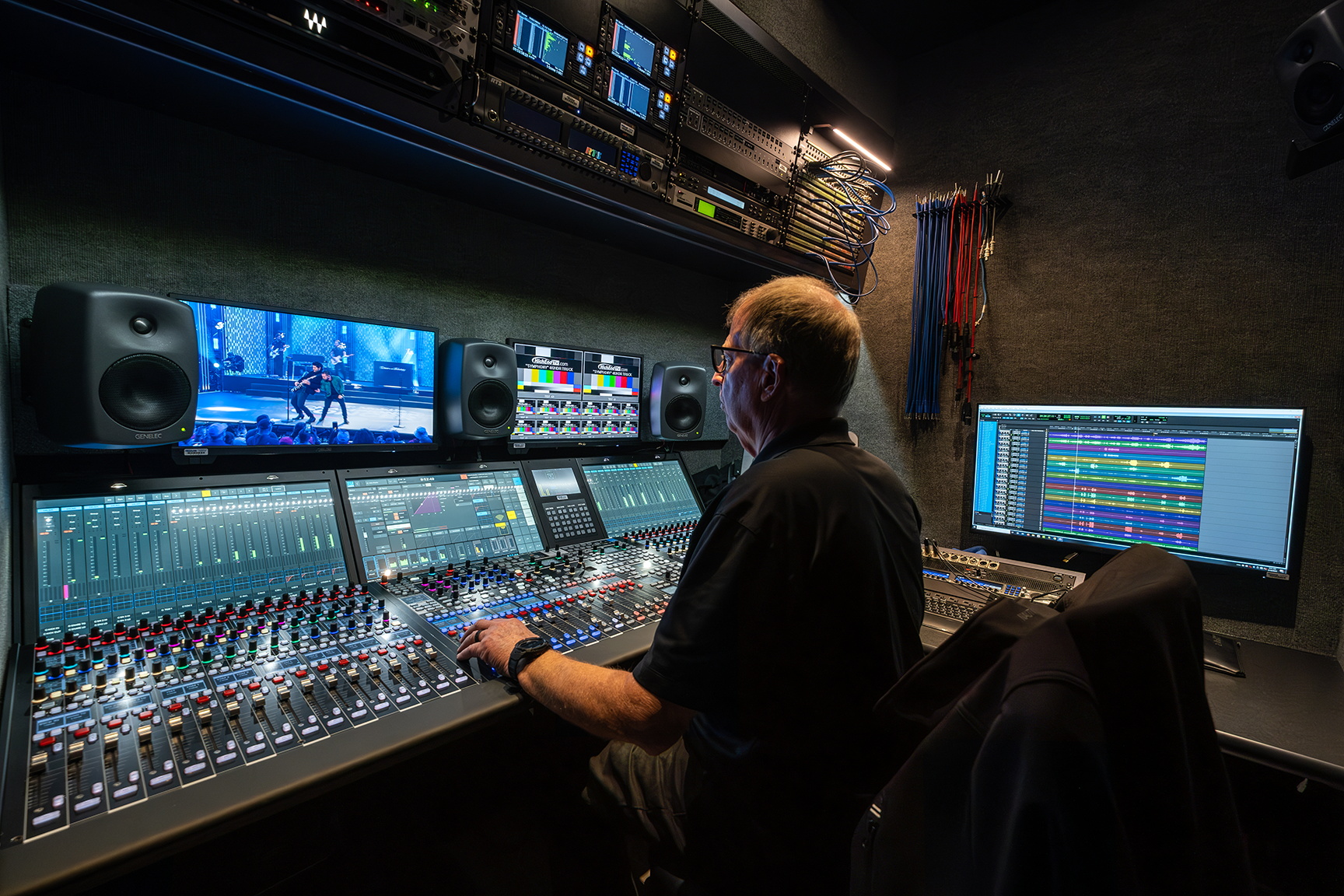4K Camera Support With Vinten's Phil Dalgoutte

Phil Dalgoutte, Vinten
IPSWICH, U.K. and ALEXANDRIA, Va..—A couple decades ago, there were two basic camera designs: ENG and studio. Professional camera support options were tailored to these two camera styles, and you could safely assume that any product targeted at your variety of camera would be at least competent at supporting it.
Some things have changed in the intervening years, and cameras now come in a bewildering variety of sizes, shapes, weights and operational functionality. Just as the cameras have changed, so too have the shape and format of camera support. However, the function of a camera support system is unchanged: Give the operator steady control of the camera and the ability to move the camera in a smooth, predictable way.
To learn the latest in camera support technology, Broadcast Engineering Extra spoke to Phil Dalgoutte, left, product manager for Vinten, a well-known manufacturer of camera support products.
BE Extra: As cameras have gotten smaller, tripods and pan/tilt heads have followed suit. Is there a size/weight below which you simply can’t engineer sturdy and reliable camera support equipment? Will a good tripod and pan/tilt head always weigh at least five pounds, even if the camera weighs 10 ounces?
Dalgoutte: While cameras have indeed gotten smaller over the years, we haven’t seen the lenses reduce in weight. Add to this the current trend for accessorizing even the smallest cameras with such things as external recorder, batteries, follow-focus etc., and you see that the total camera systems of around 10 ounces is still an extreme case.
While we continuously investigate new lightweight materials that can be employed in camera support systems, we certainly don’t want to sacrifice stability, so we at Vinten ensure that the construction and geometry is optimized to get the best stability for a given system weight. We believe users value the smoothness and stability of shots over outright weight, other manufacturers will optimize their products differently depending on the specific application they are designing it for.

Camera operator Jim Muelder keeps the camera steady on a Vinten system at the Sochi Olympics. Ultimately, creating the current system components of a head and tripod with the current materials available, I think five pounds is an aggressive target weight. However materials science is constantly evolving so, this reduction in weight may happen with time, but is not directly driven by the reduction in camera sizes.
BE Extra: You must get some customers who say that they wish they had known about a certain feature prior to buying a product that didn’t have that feature. What are one or two features about a good camera support system that many customers fail to research and consider?
Dalgoutte: Two key points for achieving high quality images using camera support are the drag system and the rigidity of the system, primarily the tripod. Fluid drag systems employed within Vinten pan and tilt heads allow our customers to deliver very smooth movement, while also giving them the control necessary to precisely obtain the correct shot framing. A good quality tripod system will allow you to make full use of the drag system with no risk of tripod wind-up and spring-back ruining the end of the camera move.
BE Extra: Floor spreader vs. mid-spreader: Are there any guidelines about which to choose?
Dalgoutte: A floor spreader is ideal for field work where you want to be able to stabilize the tripod system by either standing on the floor spreader or weighting it down. A mid-level spreader will allow you to stabilize the tripod where you want to have the tripod legs at very different lengths, such as when you are on the very rough terrain that you might experience on a wildlife documentary. A mid-level spreader is also advantageous indoors where you may have very little room to work and are backed into a corner, allowing you to have a smaller overall footprint than a floor-spreader would allow.
BE Extra: What are a couple of unusual places that Vinten tripods and pan/tilt heads have ended up? Considering the constellation of customers, there must be a couple of interesting places where no one could have imagined the gear would go.
Dalgoutte: One of the testaments to the robustness and performance of the Vinten systems are the extremes of environment that they have ended up being used in. The British Antarctic Survey team took a Vinten system into the heart of Antarctica to document their explorations of a subglacial lake on the West Antarctic Ice Sheet. Temperatures as as cold as minus 25 degrees C, with wind speeds averaging 25 knots are thankfully quite unusual, but well-built systems are designed to survive as well there as in the desert locations where they have supported a plethora of wildlife documentary projects.

Director of photography David Linstrom using an OConnor 1030DS pan/tilt head.BE Extra: Let’s say someone wants a tripod and pan/tilt system to gracefully handle everything from a dSLR to an ENG camera with a field prompter. Is there a single system that can do that? What questions should the customer be asking to make sure s/he gets the right product?
Dalgoutte: Payload ranges are specified to ensure that the pan-and-tilt head balances, and each manufacturer has a solution to extending the range whilst maintaining the quality that the user expects. Ensuring a well-balanced pan-and-tilt head for effortless control is not solely driven by the camera package weight, but also the center of gravity of the payload. It is important for users to assess how the mass of the different system components are distributed and how this affects the overall center of gravity height of the payload to ultimately determine if a particular model is appropriate.

Casey Anderson with a Sachtler Ace L shooting for National Geographic. It is possible to handle some heavily accessorized dSLR rigs through to an ENG camera with field prompter using a single product, but it will take careful consideration as it is likely that a dSLR rig may need to have its center of gravity moved up using an accessory like Vinten’s blueBridge small-camera adaptor. Stepped counterbalance systems, such as those found in Sachtler heads may offer a slightly extended range but not perfect balance, whereas the balance system in an OConnor head will cover even the smallest payload but is a large solution that won’t be as easy to carry around. Ultimately the user has to decide on the best fit for their requirements.
BE Extra: Is there anything else our readers should know about the engineering, technology and features of a quality camera support system?
Dalgoutte: Customers sometimes underestimate the technology and engineering that goes into delivering a quality camera support system. While Vinten’s perfect balance system is one of our headline technologies allowing cameras to be moved effortlessly, it is important not to discount some of the other key features. For instance, the complex fluid dynamics that allow our drag systems to dynamically change their drag level depending on speed, allowing you to easily track high-speed objects while still precisely framing the end of a camera move, or the optimization of the geometry of our tripods to maximize the stability. Any quality camera support system will be a major investment, but if chosen carefully it will enhance a user’s work for years to come and see many cameras come and go.
Get the TV Tech Newsletter
The professional video industry's #1 source for news, trends and product and tech information. Sign up below.
Bob Kovacs is the former Technology Editor for TV Tech and editor of Government Video. He is a long-time video engineer and writer, who now works as a video producer for a government agency. In 2020, Kovacs won several awards as the editor and co-producer of the short film "Rendezvous."

